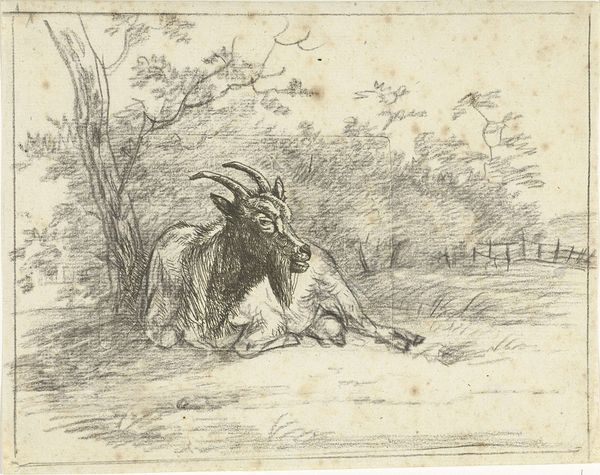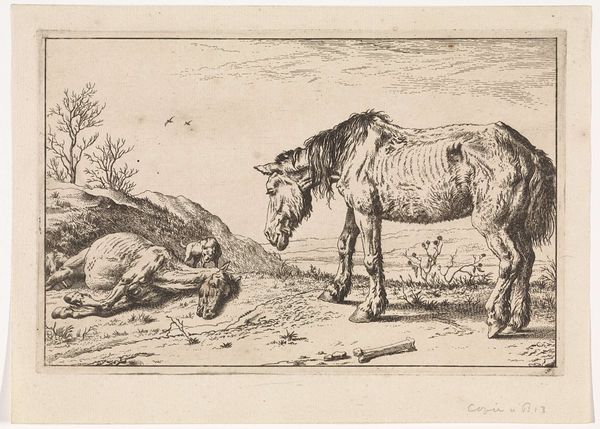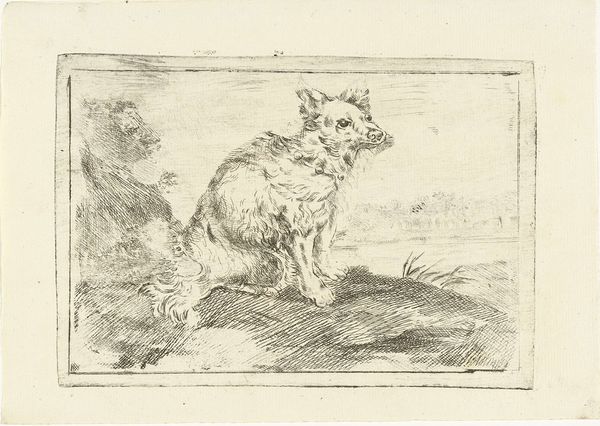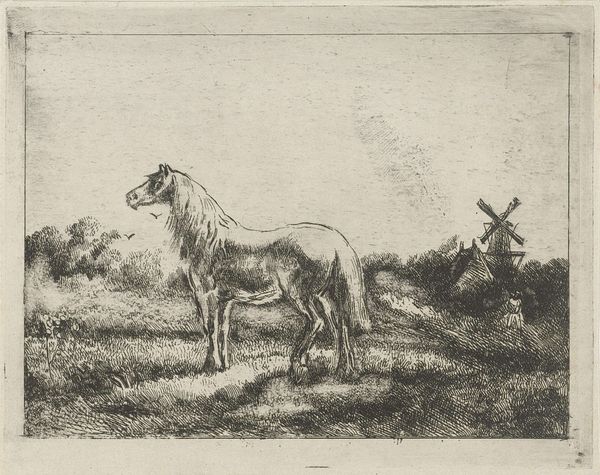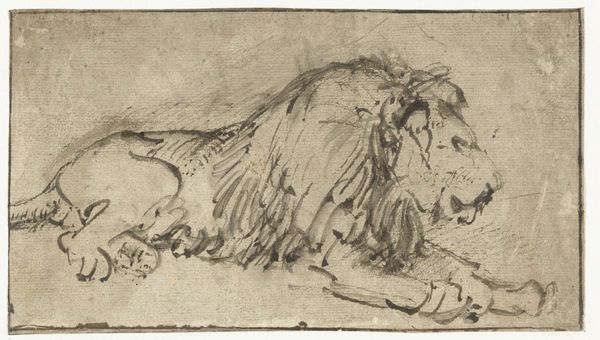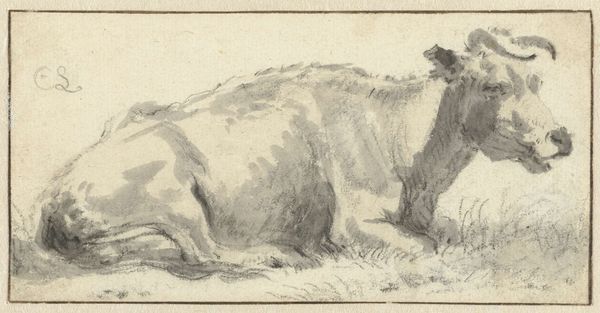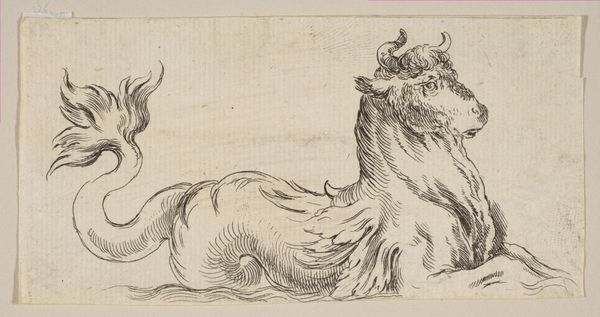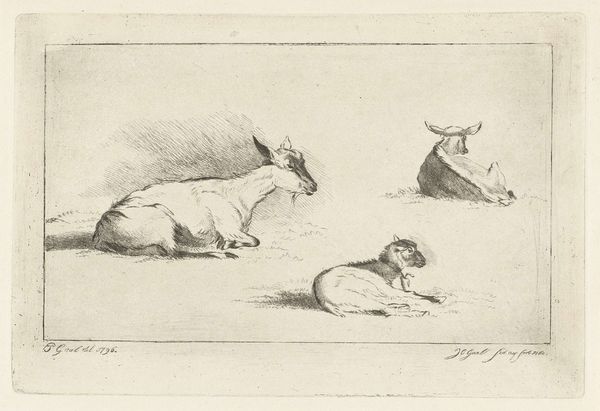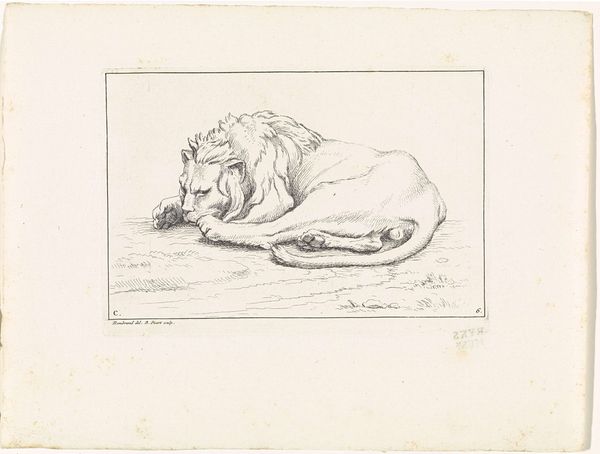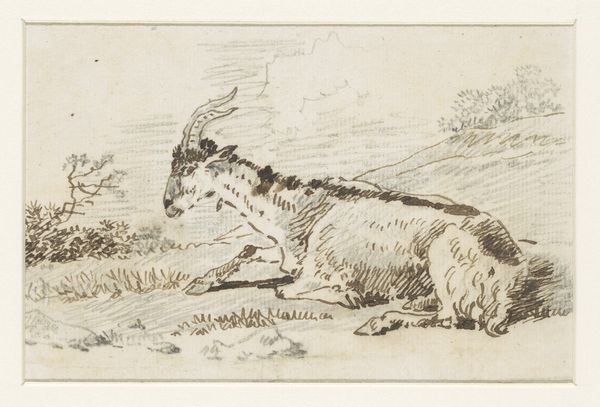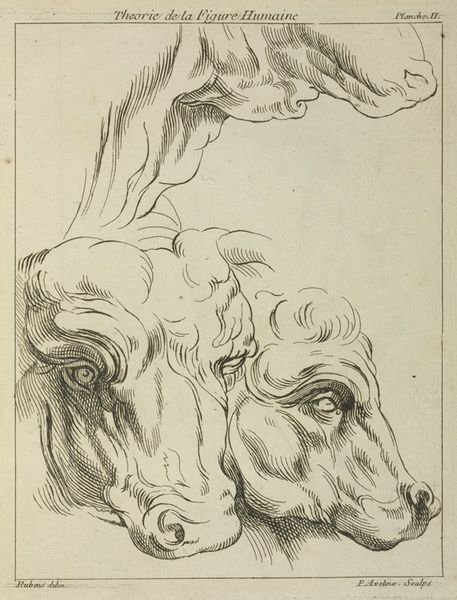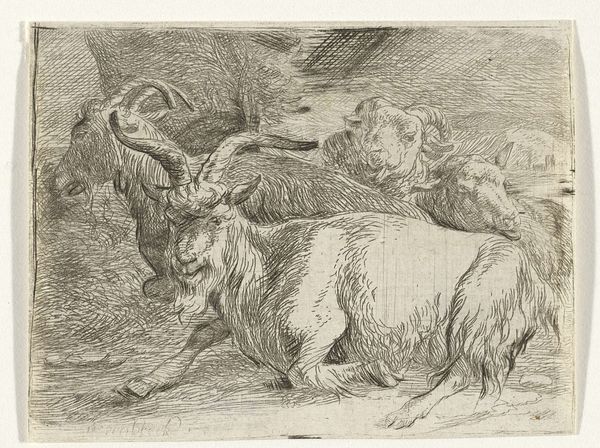
print, etching
#
portrait
# print
#
etching
#
landscape
#
genre-painting
#
realism
Dimensions: height 148 mm, width 220 mm
Copyright: Rijks Museum: Open Domain
Editor: This etching, "Twee liggende geiten," or "Two Lying Goats," made around 1860 by Jacobus Cornelis Gaal, presents two rather shaggy goats lounging in a field. I’m struck by the apparent simplicity of the subject, yet also by the detailed work in the fur. How do you approach a work like this? Curator: Immediately, I think about the material realities that shape this image. Etching, as a printmaking process, democratizes image production. It's about replication, distribution, and ultimately, consumption. How does the materiality of etching itself - the copper plate, the acid, the press - influence how we understand Gaal's depiction of these goats? Is it simply about representing the animals, or is it commenting on rural life, labor, and the commodification of nature during this era? Editor: So, you're thinking beyond just the goats themselves, considering the means of making it. Do you think the choice of etching affected his composition, or what he chose to depict? Curator: Absolutely! Etching allows for intricate detail, evident in the texture of the goats' coats and the suggestion of grass. This level of detail could speak to the growing urban consumer, hungry for images of rural life – images that might be quite different from their lived reality. Think about who had access to prints like these and what kind of narratives they consumed regarding agricultural production. Editor: That’s interesting, the idea of "consuming" images. It makes me think about how the goats, though seemingly the subjects, might also represent a different kind of product or resource in 1860. Curator: Exactly! The image, printed and distributed, becomes a commodity itself. Perhaps examining farm practices and urbanization movements of the era can provide valuable cultural context about its initial appeal and significance. Editor: It shifts the whole artwork. Instead of pastoral it hints at market forces. Curator: Precisely. Thinking materialistically urges us to investigate beyond the surface.
Comments
No comments
Be the first to comment and join the conversation on the ultimate creative platform.

